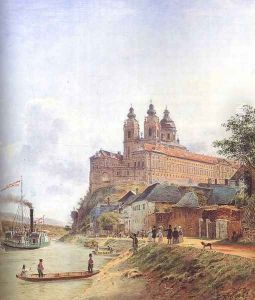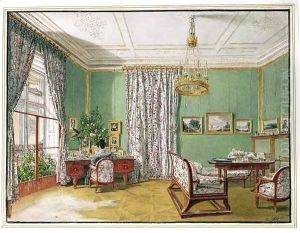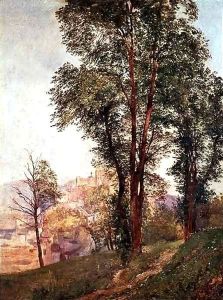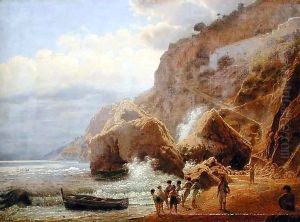Jakob Alt Paintings
Jakob Alt was an Austrian painter and lithographer who made significant contributions to the landscape and architectural genres of art during the 19th century. Born on September 27, 1789, in Frankfurt am Main, Germany, Alt's artistic journey began under the guidance of his father, who was also a painter. His family moved to Vienna when he was a child, and this city, with its rich cultural heritage and scenic beauty, would become a central subject of his work throughout his life.
Alt's early career was characterized by his study of landscape painting, a genre that was gaining popularity at the time. He was particularly influenced by the Dutch landscape painters of the 17th century. Alt's work is noted for its accuracy and attention to detail, which was achieved through his method of painting directly from nature. His ability to capture the nuances of light and atmosphere was particularly admired.
In 1817, Jakob Alt married Franziska Schweiger, and they had several children who also became artists, including the notable watercolorist Rudolf von Alt. Jakob Alt's family background and his role as a father figure in a family of artists contributed to the nurturing of a distinct artistic tradition within his own lineage.
Throughout his life, Alt traveled extensively across Europe, documenting landscapes, cityscapes, and architectural landmarks with his brush and lithographic stone. He is perhaps best known for his panoramic views and cityscapes of Vienna, which provide a valuable historical record of the city's appearance during the 19th century. His works not only reflect the aesthetic sensibilities of the Biedermeier period but also serve as important documentary evidence of the urban and rural landscapes of his time.
Alt's contributions to lithography should also be noted; he was an early adopter of the technique in Austria and produced a number of fine prints. His lithographs helped disseminate his work to a wider audience and contributed to his reputation during his lifetime.
Jakob Alt died on July 30, 1872, in Vienna. Today, his artwork is held in many prestigious collections and institutions, serving as a testament to his skill and dedication to capturing the spirit of the Austrian landscape and its built environment. Alt's legacy continues to be celebrated for its historical value and its embodiment of the artistic spirit of the Biedermeier period.



